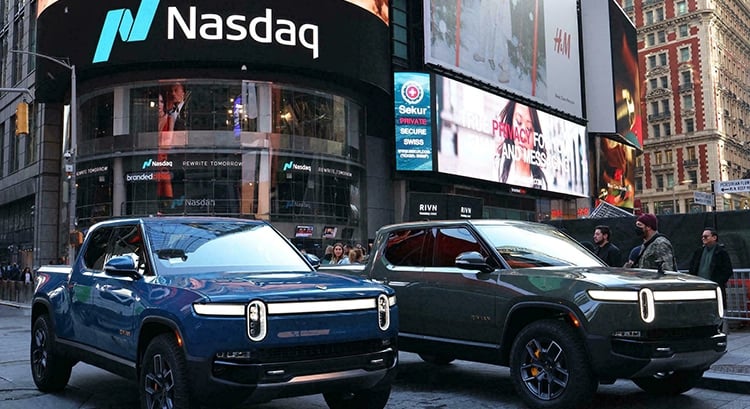Rivian Strengthens Its Position in the Autonomous Driving Revolution
Rivian $RIVN is rapidly emerging as a significant force in the autonomous driving technology landscape, with Morgan Stanley spotlighting the EV company’s integrated AI-powered driving systems. Analysts at the bank suggest that Rivian’s self-driving platform could become a strategic asset for legacy automakers seeking to stay relevant in the evolving EV autonomy race.
The upcoming AI and Autonomy Day is expected to be a landmark event, showcasing Rivian’s direction as it continues to blur the line between EV manufacturing and autonomous vehicle technology innovation.
R2 and AV 2.0: A Technological Leap Forward
CEO RJ Scaringe describes Rivian’s transition from the R1 architecture to the AV 2.0 system in the R2 as transformational. According to Morgan Stanley, this next-gen platform brings several strategic advantages:
Key Highlights of the R2 AV 2.0 Platform
Improved unit economics from day one
Better supplier agreements for cost control
Reduced material costs through smarter design
Full integration of AI-powered vehicle autonomy
This evolution marks Rivian’s push to become not just an EV manufacturer, but a leader in scalable AI infrastructure and intelligent driving systems.

Data-Centric Learning and Offline AI Training
Rivian’s data acquisition strategy is central to its autonomous vision. Despite having a smaller fleet, the company maximizes learning through robust sensor setups and offline training systems.
Core Components of Rivian’s AI Sensor Suite
High-resolution 55 MP cameras
Five integrated radar units
Custom-designed offline AI learning environments
Adaptive machine learning frameworks
This approach gives Rivian the ability to iterate on autonomous algorithms efficiently, even without mass deployment.
Scalable AI: Rivian’s Unique GPU Rental Strategy
Rivian takes a different path from other automakers by renting GPUs rather than owning them outright—a strategy designed for flexibility in the fast-moving world of EV software architecture.
Benefits of the GPU Rental Model
Adjusts to volatile chip prices
Enables rapid expansion of computing resources
Reduces upfront capital expenditure
Supports dynamic machine learning scalability
This GPU approach underlines Rivian’s commitment to building a scalable, full-stack AI ecosystem.

A Strategic Partnership with Volkswagen
Rivian’s recent partnership with Volkswagen is more than a commercial agreement—it serves as a proof of concept for future strategic tech partnerships between agile innovators and legacy OEMs.
Implications of the VW-Rivian Collaboration
Validates Rivian as a tech-first EV company
Encourages cross-industry AI integration
Signals market readiness for full-stack autonomy solutions
The alliance also supports Rivian’s positioning as a software-centric mobility company.
Challenges Ahead: Resources and Rare Earths
Despite its strengths, Rivian faces notable challenges. High-performance AI systems demand vast computing resources, and the U.S. supply chain is still dependent on imported rare-earth materials.
Rivian’s Mitigation Strategies
Developing rare-earth-free electric motors
Diversifying supply chains for the R2 platform
Investing in alternative materials sourcing
Enhancing domestic production capabilities
By focusing on material independence, Rivian aims to shield itself from future geopolitical and resource-driven instability.
Conclusion: Rivian Aims to Lead in AI-Driven Electric Mobility
As interest in self-driving electric vehicles accelerates, Rivian is not just building cars—it is constructing a tech-driven autonomous mobility ecosystem. With its AI-centric architecture, flexible computing model, and strategic alliances, Rivian is positioning itself among the most technologically autonomous EV players of the future.
Its ability to scale innovation while managing cost, infrastructure, and supply chain complexities could make it a defining force in next-generation transportation.















Comments
Rivian's innovative AI-driven platform could be the turning point legacy automakers need to reclaim their edge in the evolving EV era.
Bold investment moves like this illustrate the growing confidence in automation-led growth